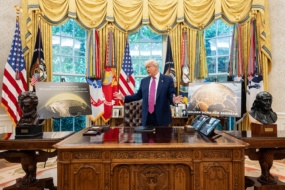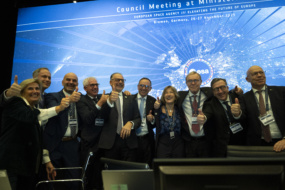True Anomaly is hoping its self-funded Jackal mission will prepare it to deliver to the military a ready-made solution to more efficiently keep an eye on adversaries in orbit.
Nothing’s easy: The Colorado-based startup said it “made contact with and received telemetry data from one Jackal, but have not yet been able to establish communications with the other,” adding that it is working through the challenge of linking up new spacecraft deployed on crowded rideshare missions.
The two Jackal spacecraft are intended to rendezvous, moving from 3,000 km to 100 km apart, and then even closer, CEO Even Rogers (a former USAF Major who played the adversary in space training exercises) told Payload. The vehicles will image each other with optical and radar sensors, and attempt to complete a full circumnavigation inspection.
TA’s pitch: The Space Force uses five of Northrop Grumman’s Geosynchronous Space Situational Awareness Program (GSSAP) satellites to track objects in high orbits, but while they can maneuver for better visibility, their ability to do so is constrained by their fuel needs. The cost of the program hasn’t been disclosed.
Rogers, on the other hand, believes building many cheap spacecraft will allow True Anomaly to achieve “maneuver without regret at the constellation level”—its spacecraft will be able to go where they need to go and be discarded at the end of their service life. He envisions dozens of Jackals in different orbits, keeping a close eye on US rivals.
“Jackal is exactly designed to characterize these capabilities and provide transparency about what our adversaries are building,” he says.
Why now: “I have requirements on space situational awareness in each region, LEO, MEO GEO…and transit to the Moon and beyond,” Col. Raj Agrawal, who leads Delta 2, the Space Force Unit that tracks objects in space, said during a webinar hosted by the Air and Space Forces Association. “I need quality level information that is exploitable for each of those regimes and beyond, and commercial can get us there.”
The Space Force is looking to the commercial sector to provide capabilities that it can “make operational now,” according to retired Maj. Gen. Doug Raaberg, interim president and CEO of the Air and Space Forces Association.
That’s just what True Anomaly is trying to do with its Transporter 10 launch: prepare to deliver already-qualified rendezvous and proximity tech to the military.
Look ahead: Agrawal may have tipped the Space Force’s hand as it evaluates future capabilities in orbit. “You have to make fighters in space—I want to be careful, you have to create the ability to defend [space] assets,” he said. “You can’t create the military service, understanding the threat, and not equip it to do military things.”




